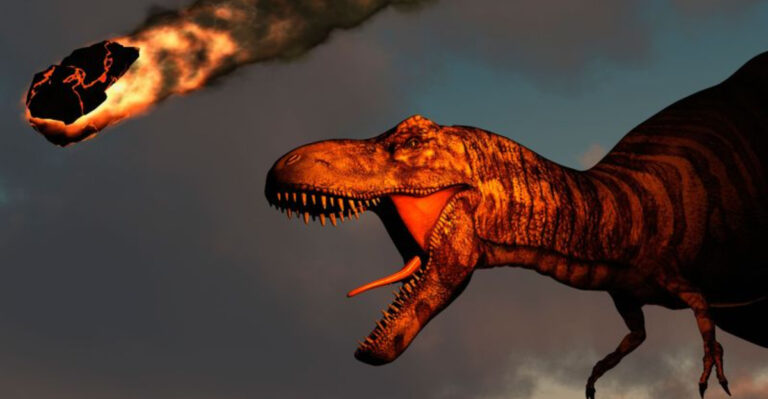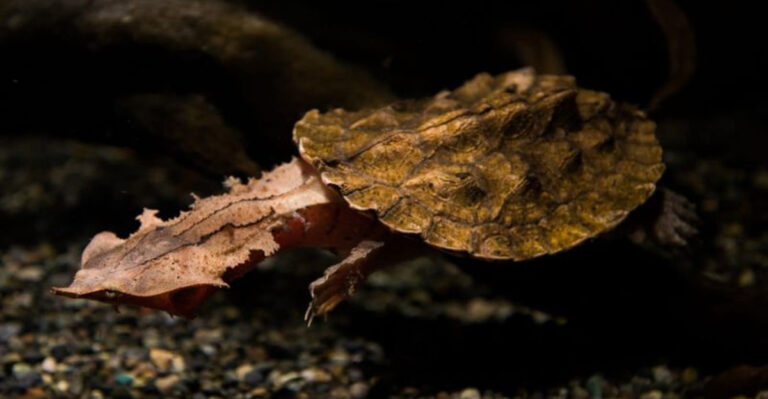USA’s Largest Fossilized Animals Ever Found
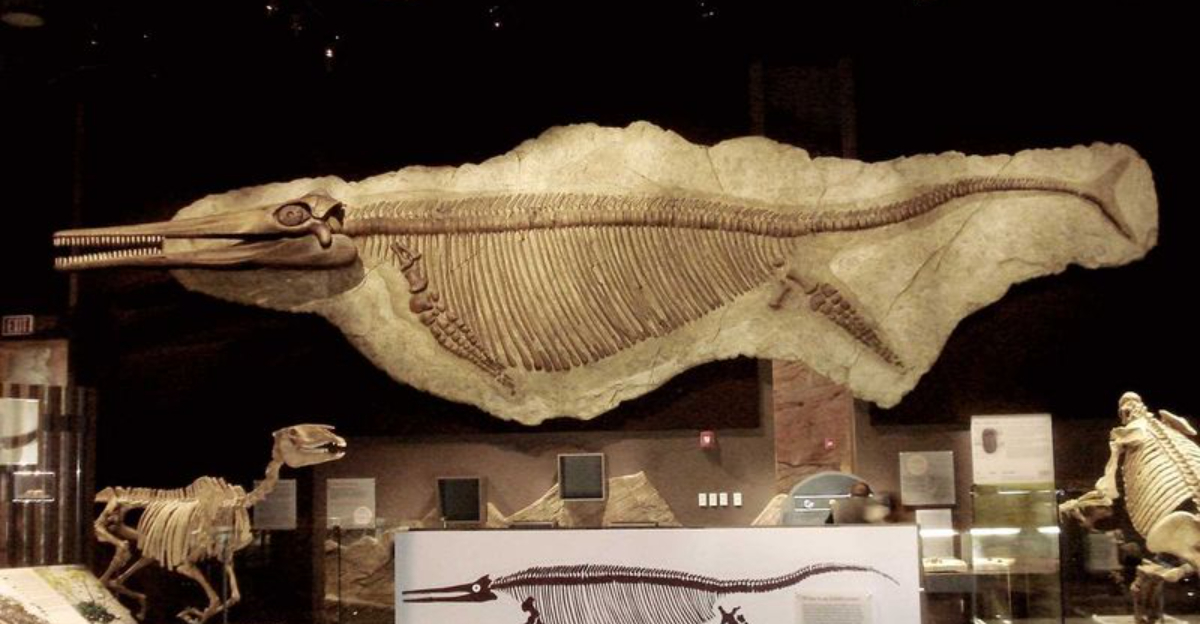
Deep beneath American soil lie the colossal remains of prehistoric giants that once roamed our continent. These massive fossilized creatures give us a window into Earth’s distant past when giants ruled the land, sea, and sky.
From towering dinosaurs to enormous marine predators, America has yielded some truly jaw-dropping fossil discoveries that continue to amaze scientists and the public alike.
1. Sue the T. Rex

Unearthed in South Dakota in 1990, this magnificent beast stands as the most complete T. Rex skeleton ever discovered. At 40 feet long and 13 feet tall at the hips, Sue would have weighed around 9 tons in life.
Named after paleontologist Sue Hendrickson who found her, this prehistoric predator now resides at Chicago’s Field Museum where visitors gawk at her impressive 58 teeth and massive skull.
2. Scotty the T. Rex
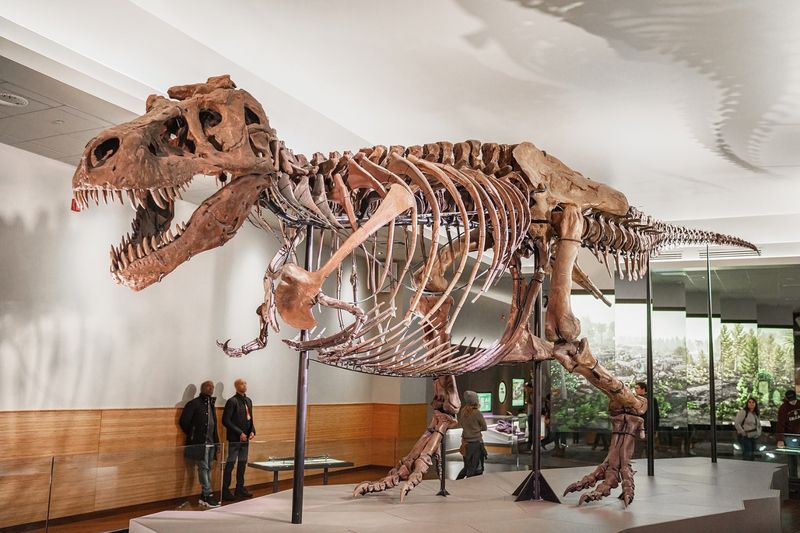
While Sue gets more fame, Scotty actually takes the crown for largest T. Rex ever found. Discovered in Saskatchewan, Canada but studied extensively by American paleontologists, this behemoth stretched 43 feet long.
Scientists estimate Scotty weighed over 19,500 pounds in life—heavier than any other known T. Rex. Battle scars on the fossil suggest this giant lived a rough life, surviving infections and injuries during its 30+ years.
3. Mammoth of Hot Springs
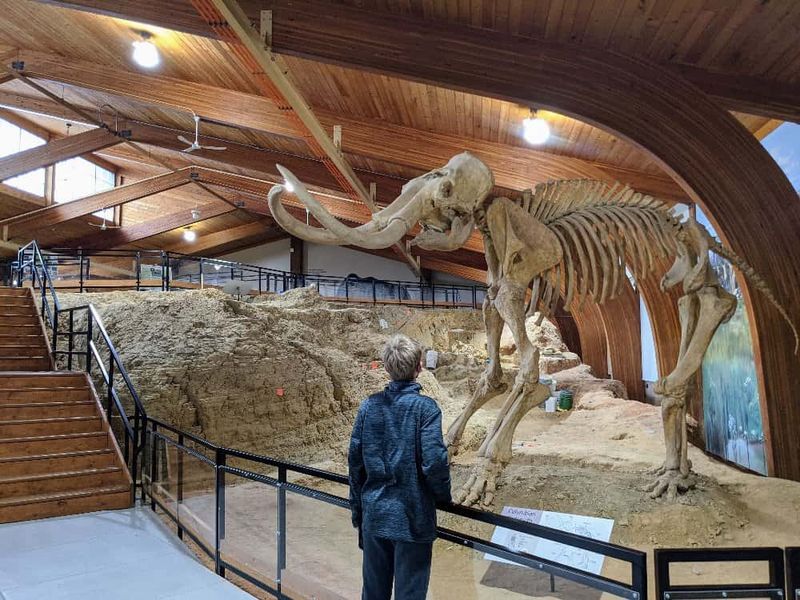
Accidentally found during construction in South Dakota, this Columbian mammoth ranks among the largest ever discovered in North America. Its massive tusks curved an impressive 11 feet, making it a truly intimidating sight.
Carbon dating revealed this giant lived approximately 26,000 years ago. Unlike woolly mammoths, Columbian mammoths preferred warmer climates, roaming across what would become the United States during the Pleistocene epoch.
4. Seismosaurus

Known as the “earth-shaker lizard,” this enormous sauropod dinosaur stretched up to 150 feet long—nearly the length of an Olympic swimming pool! Discovered in New Mexico in 1979, it ranks among the longest creatures ever to walk on land.
Scientists believe this gentle plant-eater weighed around 30 tons and used its long neck to reach high vegetation. Though later reclassified as a type of Diplodocus, its massive size still amazes paleontologists today.
5. Shonisaurus
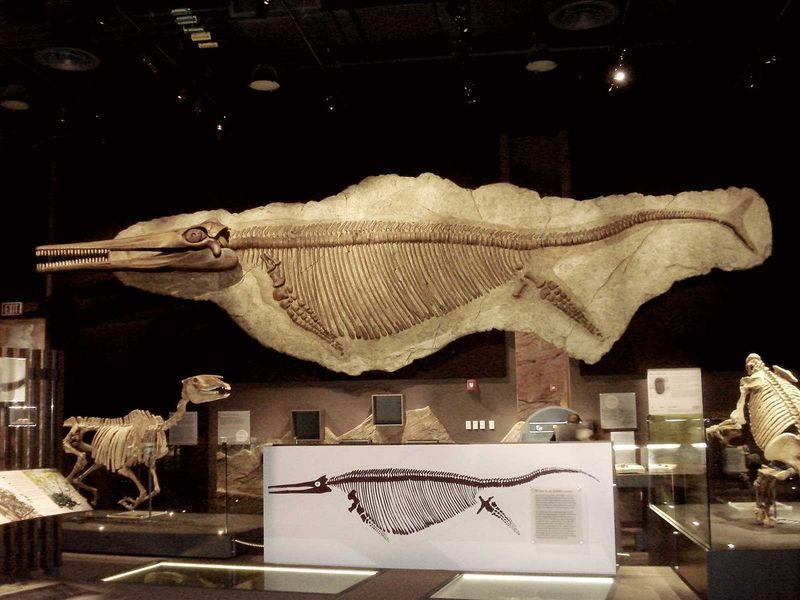
Imagine a school bus with flippers! At 50 feet long, these massive marine reptiles dominated Triassic seas 215 million years ago. Nevada’s state fossil was first uncovered in 1920, but major excavations didn’t happen until the 1950s.
Unlike modern dolphins, these giants had four paddle-like limbs and massive eyes for hunting in deep water. Fossil evidence suggests they fed on squid-like creatures, using their 5-inch teeth to snag slippery prey.
6. Basilosaurus
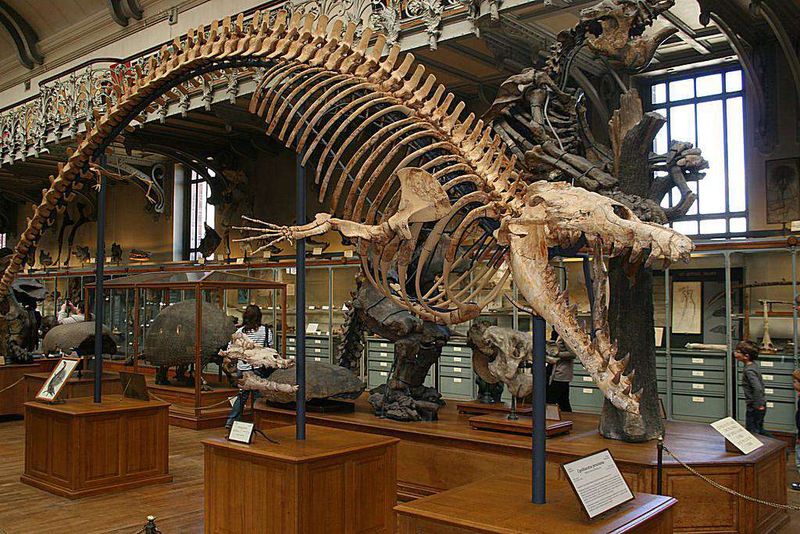
First mistaken for a reptile (hence the “saurus” name), this 60-foot prehistoric whale once ruled the seas covering what’s now Alabama and Mississippi. Unlike modern whales, it had small hind limbs—evolutionary leftovers from its land-dwelling ancestors.
Weighing approximately 60 tons, these predators had teeth designed for ripping flesh rather than filtering plankton. Alabama honored this impressive beast by naming it the state fossil in 1984.
7. Supersaurus

Found in Colorado’s Morrison Formation, this giant’s neck vertebrae alone measured over 8 feet long! When fully assembled, Supersaurus stretched approximately 105-110 feet from nose to tail.
Despite its intimidating size, this gentle herbivore likely traveled in herds for protection against predators. Its massive body required constant feeding, possibly consuming up to 1,000 pounds of vegetation daily just to maintain its enormous frame.
8. Megalodon
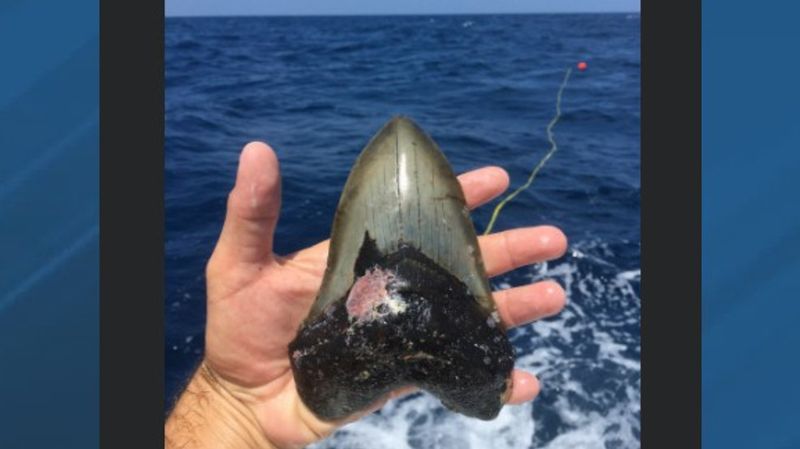
Nothing captures the imagination quite like the ancient shark that makes Great Whites look like goldfish. With teeth the size of human hands, these ocean terrors grew up to 60 feet long and weighed as much as 50 tons.
Fossilized Megalodon teeth frequently wash up on beaches along the Atlantic coast. Scientists believe these monsters could bite with a force of up to 40,000 pounds—enough to crush a small boat!
9. Deinosuchus
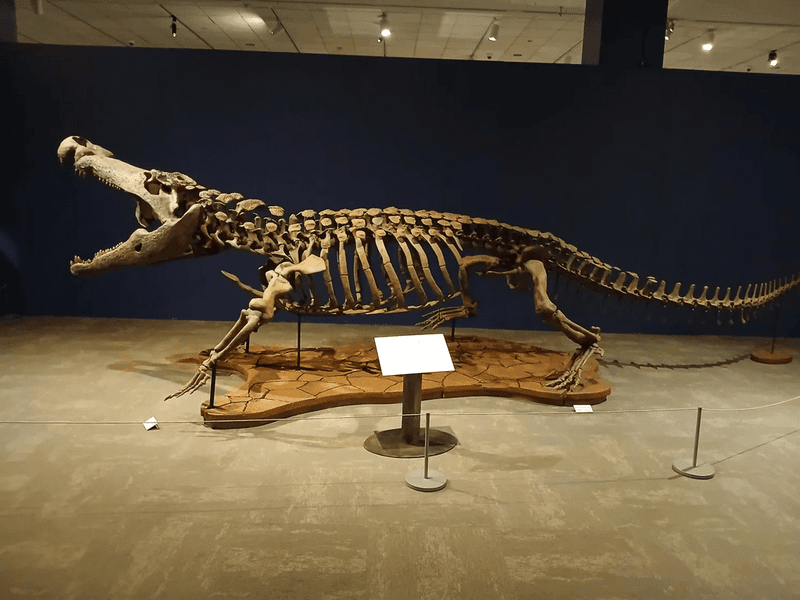
Forget modern alligators—this prehistoric relative stretched up to 40 feet long and weighed nearly 10 tons! Fossils discovered across Texas, Montana, and North Carolina reveal a creature that terrorized coastal waters about 80 million years ago.
Armed with teeth the size of bananas, these “terrible crocodiles” could take down even large dinosaurs that came to drink. Their massive jaws generated bite forces strong enough to crush turtle shells like potato chips.
10. Quetzalcoatlus
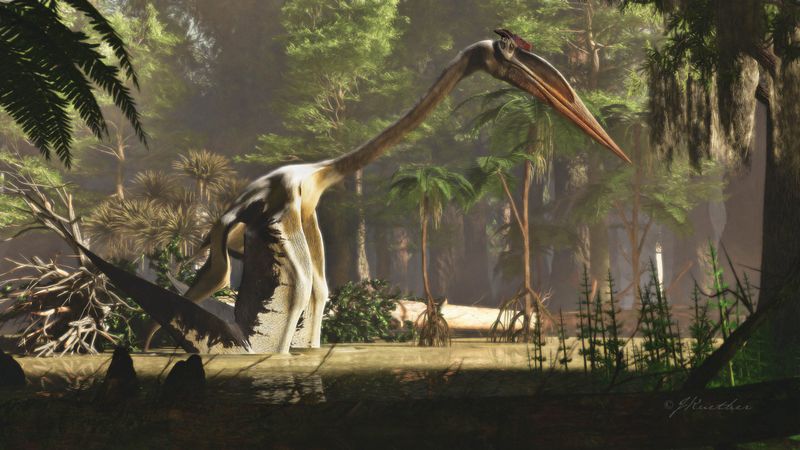
Soaring above Texas 68 million years ago, this pterosaur had a wingspan wider than a small airplane—up to 36 feet across! First discovered in Big Bend National Park in 1971, it represents the largest flying animal ever known.
Despite its massive size, this creature likely weighed only about 550 pounds thanks to hollow bones. Standing on the ground, it reached the height of a giraffe, using its long beak to catch fish or small dinosaurs.
11. Titanoboa
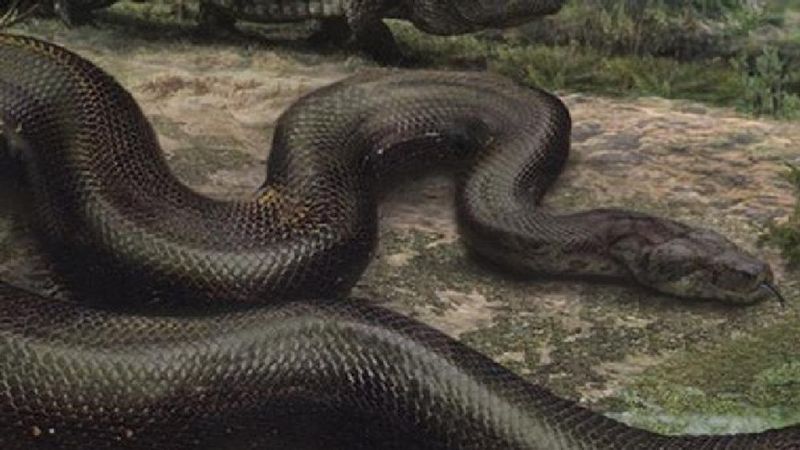
Slithering through ancient swamps at a bone-chilling 42 feet long, this massive snake weighed over a ton and could swallow crocodiles whole! Though originally discovered in Colombia, significant specimens have been studied by American paleontologists.
Living about 60 million years ago after the dinosaurs vanished, this monster thrived in hot, humid environments. Scientists use its massive size to calculate that ancient Earth was much warmer than previously thought.
12. Brachiosaurus
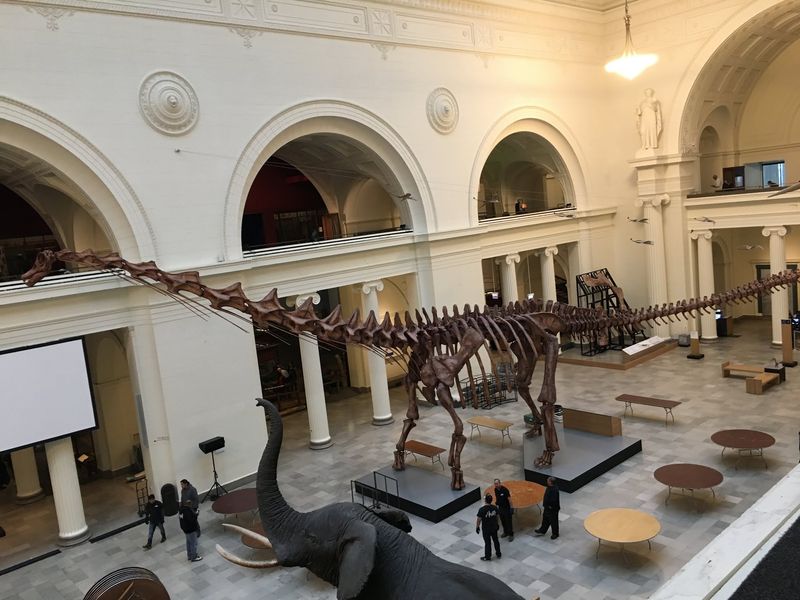
Reaching heights of 40-50 feet—taller than a four-story building—this long-necked giant could peek into third-floor windows! The most complete specimen was unearthed in Colorado’s Morrison Formation and now stands in Chicago’s Field Museum.
Unlike other sauropods, Brachiosaurus had longer front legs than back legs, giving it a giraffe-like posture. This unique adaptation allowed it to reach high vegetation that other dinosaurs couldn’t access, reducing competition for food.

